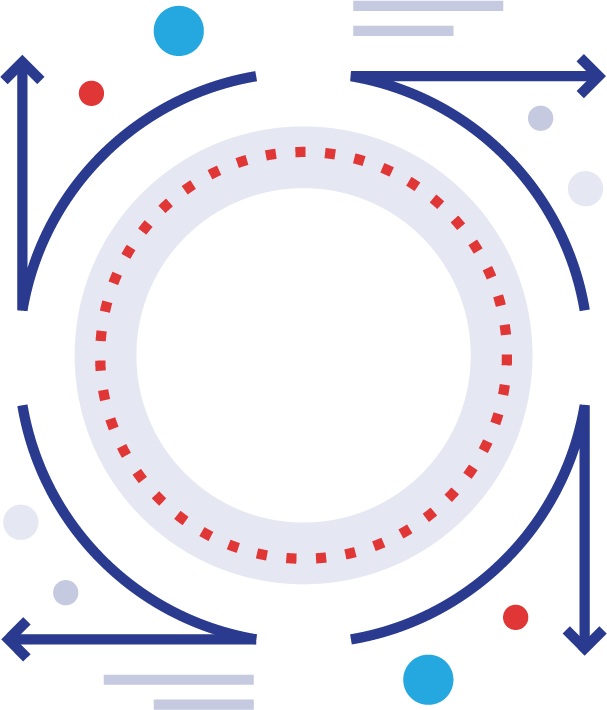Excited states with Quantum Package and CHAMP
HOME
Table of Contents
 \(\longrightarrow\)
\(\longrightarrow\)
 \(\longrightarrow\)
\(\longrightarrow\)
 \(\longrightarrow\)
\(\longrightarrow\)

1 Introduction
We will import a Hartree-Fock wavefunction for the formaldehyde (H2CO) molecule from a TREXIO file into Quantum Package (QP), and run a two-state CIPSI calculation with these orbitals. The wavefunctions for the 2 states will be stored in the TREXIO file, and we will run wave function optimization in CHAMP, followed by a Diffusion Monte Carlo calculation.
The theoretical best estimate of the excitation energy (complete basis set extrapolation from coupled cluster calculations) is 3.97 eV.
2 CIPSI 2-state calculations
You can import the single-determinant wave function from the provided TREXIO file COH2.trexio as:
wget https://github.com/TREX-CoE/school-ncc-2023/raw/master/docs/TrexioFiles/COH2.trexio qp_import_trexio.py COH2.trexio -o COH2 qp set_file COH2
Specify that you want to run a two-state calculation:
qp set determinants n_states 2
Tell QP to stop when the number of determinants is larger than 2000
qp set determinants n_det_max 2000
and run the CIPSI in the Full-CI space:
qp_srun fci COH2 | tee COH2.fci.out
The expected energy should be around 4 eV but the result of the calculation is around 8 eV.
The reason for this discrepancy is that the orbitals in the TREXIO file are symmetry adapted, so it is not possible to build determinants from other symmetries in the determinant space. To obtain a solution from another symmetry, the calculation should include at least one determinant of each symmetry.
The suggested solution is to first perform a CIS (Configuration Interaction Singles) calculation, which will ensure that at least one determinant of each symmetry is included. Then, continue with a CIPSI calculation in the FCI space.
By default, at every iteration QP tries to double the size of the wave function. In QMC, we will use a small number of determinants, so we should tell QP to add less determinants at each iteration to have a finer selection.
qp set determinants selection_factor 0.5
qp_srun cis COH2 | tee COH2.cis.out qp set determinants read_wf true qp_srun fci COH2 | tee COH2.fci.out
read_wf = true specifies that the wave function stored in the
EZFIO database should be used as a starting point for the the CI calculation.
Now, we have obtained a more reasonable excitation energy, around 4 eV, and we are ready to export the data for CHAMP.
3 Export wave functions to CHAMP
The excited states are of different symmetries, so we will generate two different setups in CHAMP, one for each state. To do that, we will save two different files, one for each state, and containing only the non-zero determinants.
First, copy the COH2 directory into COH2_GS and COH2_ES, one
directory for each state:
cp -r COH2 COH2_GS cp -r COH2 COH2_ES
Then, we will use qp_edit to extract one state in each EZFIO
directory:
qp set_file COH2_GS qp edit --state=1 qp set_file COH2_ES qp edit --state=2
The states have been extracted, but the EZFIO databases still contain the determinants with almost zero coefficients. We can remove them by running
qp set_file COH2_GS qp run truncate_wf
This last program is interactive and asks for the minimum weight of
the kept configurations. Answer 1.d-10 to this question.
Similarly, remove the negligible determinants from the excited state:
qp set_file COH2_ES qp run truncate_wf
We can now export the wave functions in two different TREXIO files. To do that, for each state we copy the initial TREXIO file and add the determinants information:
cp COH2.trexio COH2_GS.trexio qp set_file COH2_GS qp set trexio trexio_file COH2_GS.trexio qp_srun export_trexio COH2_GS
cp COH2.trexio COH2_ES.trexio qp set_file COH2_ES qp set trexio trexio_file COH2_ES.trexio qp_srun export_trexio COH2_ES
Now, we are ready to run the QMC calculations for each state.
4 QMC wave function optimizations
In this section, we will optimize a Jastrow factor for each state, and we will the re-optimize the CI coefficients in the presence of the Jastrow. The setup of the CHAMP files is similar to what we have done in section 4.
Here, we have 12 electrons, 6 up and 6 down.
4.1 Optimization of the ground state
Create a new directory, and move the COH2_GS.trexio TREXIO file inside it.
Go into this directory, and prepare the files for running CHAMP:
mkdir ChampGS mv COH2_GS.trexio ChampGS cd ChampGS python3 /project/project_465000321/champ/tools/trex_tools/trex2champ.py \ --trex "COH2_GS.trexio" \ --motype "Canonical" \ --backend "HDF5" \ --basis_prefix "BFD-aug-cc-pVDZ" \ --lcao \ --geom \ --basis \ --ecp \ --sym \ --det
COH2 has three different atom types, so the Jastrow factor file
will be slightly different from the file for water with one extra
line for \(a\) parameters. You can start by creating a file
called jastrow.start:
jastrow_parameter 1 5 5 0 norda,nordb,nordc 0.60000000 0.00000000 scalek,a21 0.00000000 0.00000000 0. 0. 0. 0. (a(iparmj),iparmj=1,nparma) ! e-n C 0.00000000 0.00000000 0. 0. 0. 0. (a(iparmj),iparmj=1,nparma) ! e-n O 0.00000000 0.00000000 0. 0. 0. 0. (a(iparmj),iparmj=1,nparma) ! e-n H 0.50000000 1.00000000 0. 0. 0. 0. (b(iparmj),iparmj=1,nparmb) (c(iparmj),iparmj=1,nparmc) ! e-e-n C (c(iparmj),iparmj=1,nparmc) ! e-e-n O (c(iparmj),iparmj=1,nparmc) ! e-e-n H end
Similarly, the file jastrow.der is slightly different:
jasderiv 4 4 4 5 0 0 0 0 0 0 nparma,nparmb,nparmc,nparmf 3 4 5 6 (iwjasa(iparm),iparm=1,nparma) 3 4 5 6 (iwjasa(iparm),iparm=1,nparma) 3 4 5 6 (iwjasa(iparm),iparm=1,nparma) 2 3 4 5 6 (iwjasb(iparm),iparm=1,nparmb) 3 5 7 8 9 11 13 14 15 16 17 18 20 21 23 (c(iparmj),iparmj=1,nparmc) 3 5 7 8 9 11 13 14 15 16 17 18 20 21 23 (c(iparmj),iparmj=1,nparmc) 3 5 7 8 9 11 13 14 15 16 17 18 20 21 23 (c(iparmj),iparmj=1,nparmc) end
Start by optimizing the Jastrow factor and perform a "quick"
optimization. The following champ input file (vmc_quick.inp)
contains the parameters for such a "quick" optimization.
%module optwf
ioptwf 1
ioptci 0
ioptjas 1
ioptorb 0
method 'sr_n'
ncore 0
nextorb 600
nblk_max 1000
nopt_iter 20
sr_tau 0.05
sr_eps 0.01
sr_adiag 0.01
%endmodule
%module blocking_vmc
vmc_nstep 20
vmc_nblk 20
vmc_nblkeq 1
vmc_nconf_new 0
%endmodule
If you create your input file from the H2O example, don't forget to change the number of electrons!
Move the jastrow_optimal.1.iter20 file to jastrow_optimal.rough_GS and
load this optimized Jastrow factor. You can now optimize also the CI
coefficients together with the Jastrow factor by setting:
ioptci 1
Use some more Monte Carlo steps to perform a more strict optimization. Use nopt_iter 10.
%module blocking_vmc
vmc_nstep 20
vmc_nblk 100
vmc_nblkeq 1
vmc_nconf_new 0
%endmodule
In your directory, you will now have jastrow_optimal.1.iterX and
det_optimal.1.iterX files.
Set up a DMC calculation where you use the optimal Jastrow and
CI coefficients. Adjust the etrial to be a bit below the VMC energy.
Recall that you will have to generate the mc_configs file.
Note: You could have also optimized the orbitals but we did not
do it here to keep the calculations short. If you are setting
optorb=1, load also the symmetry file.
load symmetry champ_v2_COH2_GS_symmetry.sym
4.2 Optimization of the excited state
Create a new directory, and copy the COH2_ES.trexio TREXIO file inside it.
Apply the same procedure as for the ground state.
Repeat what you have done for the ground state. Start to perform
a quick optimization of the Jastrow factor but do not start from
zero's: start from the Jastrow factor you have for the ground
state, namely, jastrow_optimal.rough_GS.
Do all step until when you obtain the DMC energy.
Compute the VMC and DMC excitation energies. Recall that if your energies are \[ E_{\rm GS}+\delta E_{\rm GS} \text{ and } E_{\rm ES}+\delta E_{\rm ES}, \] where \(\delta E\) is the statistical error, the error on \(\Delta E= E_{\rm ES}-E_{\rm GS}\) is given by \[ \sqrt{\delta E_{\text{GS}}^2+\delta E_{\text{ES}}^2}. \]